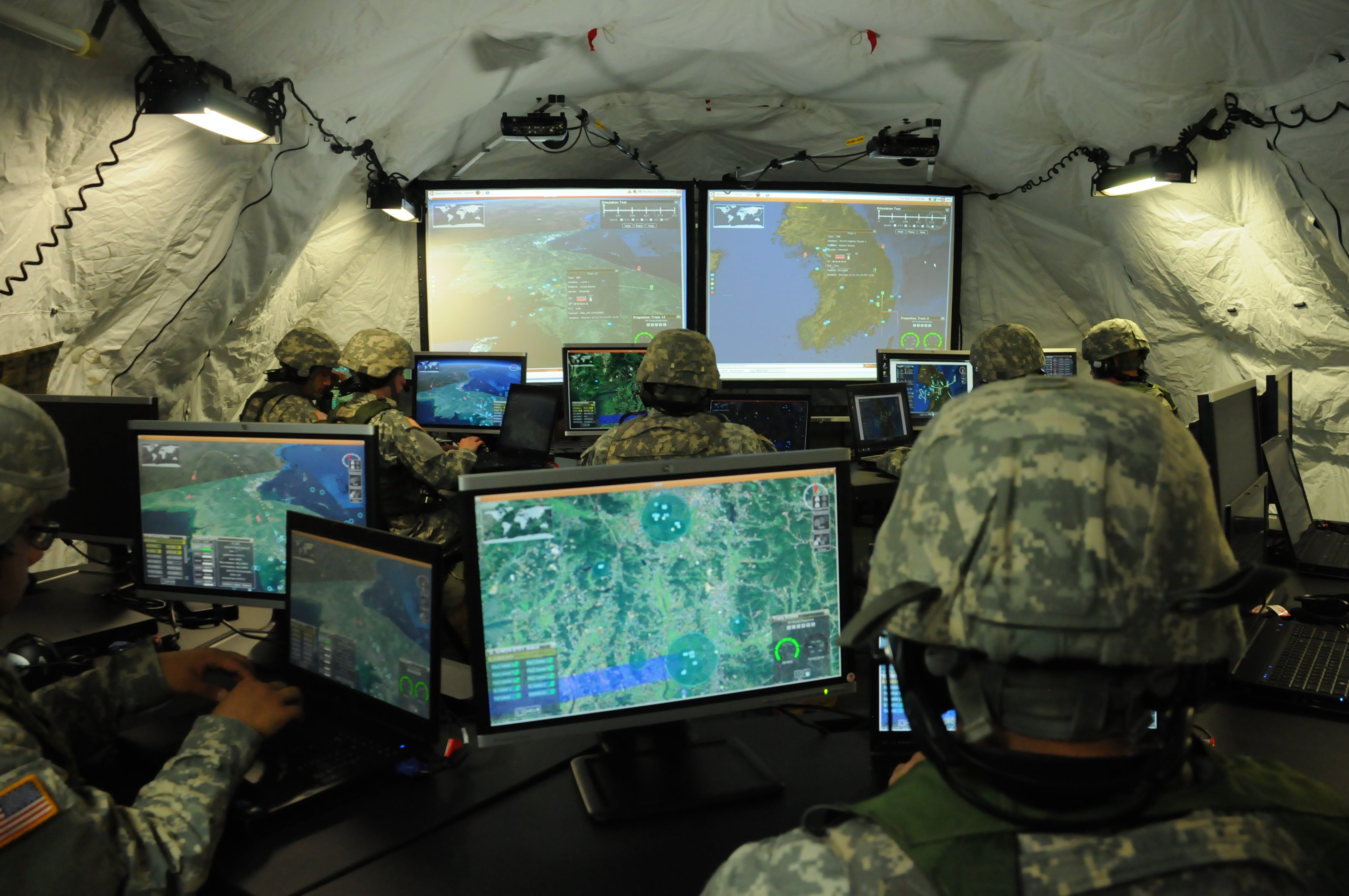WASHINGTON — The U.S. Army’s future missile defense battle manager was put to the test across long distances to prove it’s capable of playing an integral role in multidomain operations, according to Northrop Grumman, the system’s developer.
The Integrated Air and Missile Defense Battle Command System, or IBCS, showed its ability to “scale up and network” over a large swath of terrain spanning from Texas to New Mexico to Alabama in a U.S. Army-led test, Northrop announced in an Aug. 15 statement.
IBCS is the linchpin for the service’s future Army Integrated Air and Missile Defense system, or AIAMD, but has seen schedule slips to reach initial operational capability by several years, which has been partly due to the service expanding the mission for the command-and-control system beyond what was originally intended.
IBCS won’t just be the brains of AIAMD but will also connect to other vital systems on the battlefield, including the Army’s Indirect Fire Protection Capability, designed to defend against rockets, artillery and mortars as well as cruise missiles and unmanned aircraft systems.
And because of its increased responsibility on the battlefield, IBCS is being put to the test by soldiers in a series of rigorous checkouts and tests.
RELATED

“The ability of IBCS to integrate sensors and shooters over a vast area and grow the single integrated air picture offers huge advantages to air defenders and the joint forces,” Northrop’s vice president of missile defense and protective systems, Dan Verwiel, said in the statement. “This was demonstrated using an operationally realistic equipment laydown across several states and showed how IBCS is truly a force multiplier.”
The event showed "the ability of IBCS to scale broadly. It further demonstrated IBCS’ robust network management technologies to efficiently and effectively maintain voice, data and video connectivity for the warfighter’s increasingly complex and challenging environment,” he said.
The test was conducted under “stressing threat conditions,” according to Northrop.
IBCS was able to network more than 20 nodes across White Sands Missile Range in New Mexico; Fort Bliss, Texas; and Redstone Arsenal, Alabama, but operated as a single system with nine IBCS engagement operations centers and 12 IBCS integrated fire control network relays.
The system also integrated Sentinel short-range air defense radars, Patriot air-and-missile defense radars, and Patriot Advanced Capability 2 (PAC-2), PAC-3 and PAC-3 Missile Segment Enhancement interceptors.
IBCS was “virtually formed” into an IAMD task force and defended four “critical” assets while tracking enemy and friendly fighter aircraft, cruise missiles, and tactical ballistic missiles over “multiple” two-hour scenarios over the course of five weeks, according to Northrop.
The evaluation of IBCS capabilities included providing and managing a network that maintained voice, data and video connectivity; identifying objects in the air as friend or foe; and forming a single, integrated air picture. The system also planned, executed and monitored simulated threat engagements, Northrop said.
The checkout event also included adding and removing nodes to show IBCS’ ability to “self-configure as a mobile ad hoc network,” the statement notes.
Currently, commanders are restricted by limited networks tied to individual, closed systems, Northrop noted, but, with IBCS, commanders can manage forces over large distances using whatever communications capabilities are available.
Earlier soldier checkouts showed IBCS’ ability to build a more accurate integrated air picture and its effectiveness for countering electronic attacks.
IBCS has also taken out live targets, with a successful intercept on its inaugural flight test as well as an “engage-on-remote” intercept in its second flight test. It’s third flight test included two successful intercepts of two types of threats.
The system is now expected to reach initial operational capability in fiscal 2022.
Jen Judson is an award-winning journalist covering land warfare for Defense News. She has also worked for Politico and Inside Defense. She holds a Master of Science degree in journalism from Boston University and a Bachelor of Arts degree from Kenyon College.








